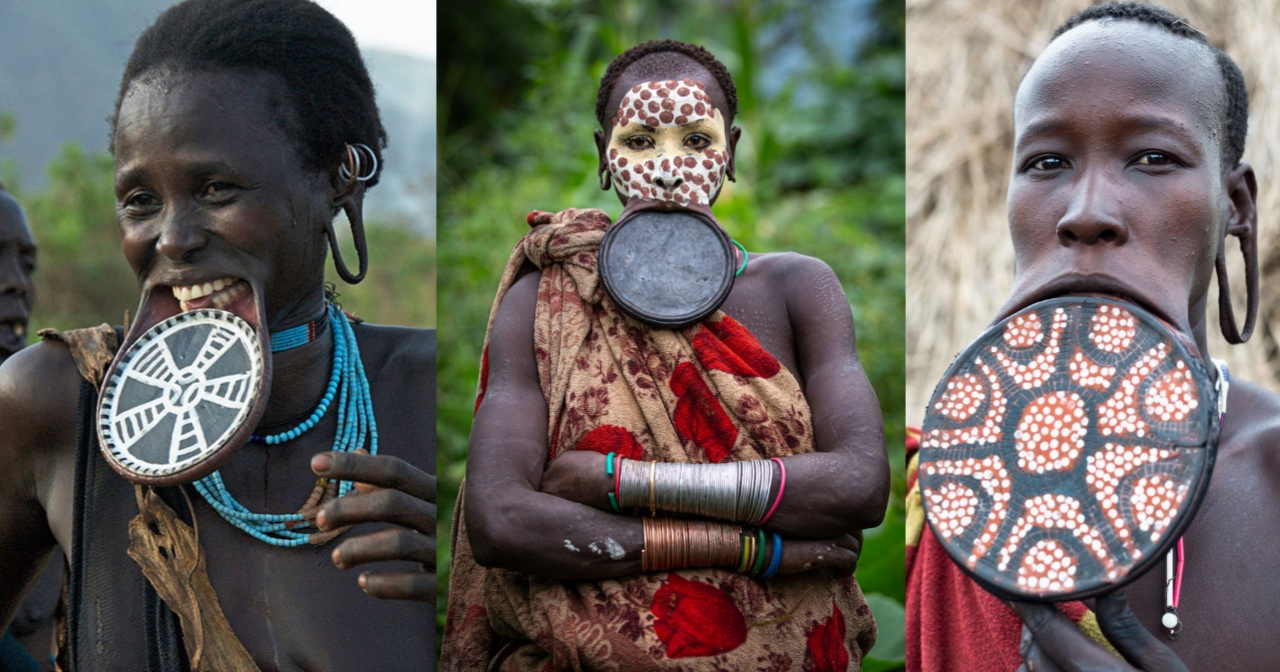The practice of wearing lip plates, a type of labret, has a long history dating back to 3300 B.C. This cultural practice is prevalent in various regions of the world, including Ethiopia, Sudan, Coastal Ecuador, Mesoamerica, and other parts of Africa and South America. However, it is most popular among the Mursi and Surma people of Ethiopia, where it has become a significant distinguishing factor for their identification.
I
Typically, the lip plate is a symbol of beauty and is predominantly practiced on females. In some places, both sexes participate in this body modification ritual. The process begins when a girl reaches puberty, usually around 12 months before marriage, and her mother removes four teeth to create space for the plate. The lower lip is then cut, and a wooden plug is inserted, which is gradually replaced by larger plates until the preferred lip size is achieved. The healing process can take several months, during which the plate is changed regularly.
Although this culture has been abandoned in most parts of the world, it is still prevalent among the Surma and Mursi people of Ethiopia. The Surma people, including the ethnic groups Timaga, Chai, and Suri Baale, have been practicing this culture for over 200 years. Similarly, the Mursi people are an ethnic group residing in the Southern Nations region of Ethiopia, near the South Sudan border. Both tribes consider the lip plate culture as a symbol of beauty and identity, attracting tourists from all over the world.
The Makonde people of Tanzania and Northern Mozambique once wore lip plates on their upper lips as a symbol of social status, while the Sara people of Chad and the Lobi people of Ghana considered it a symbol of beauty and economic relevance. However, these cultures have since been abolished.
The lip plate culture has also been practiced in other parts of the world, such as Siberia, the North Pacific Rim Region, and South America. Although the significance of the lip plate culture is subject to speculation, the Mursi and Surma people believe that the larger a maiden’s lip plate, the higher her bride price and that wearing it enhances their sense of self-worth.
Despite its historical significance and cultural value, the lip plate culture has been a cause of concern for some due to the pain and discomfort it causes to the wearer. However, some people still wear labrets as a fashion statement in modern times. Ultimately, cultural practices and traditions must be respected, but their impact on individuals should be carefully considered.
 TImBia GH Trending News
TImBia GH Trending News





